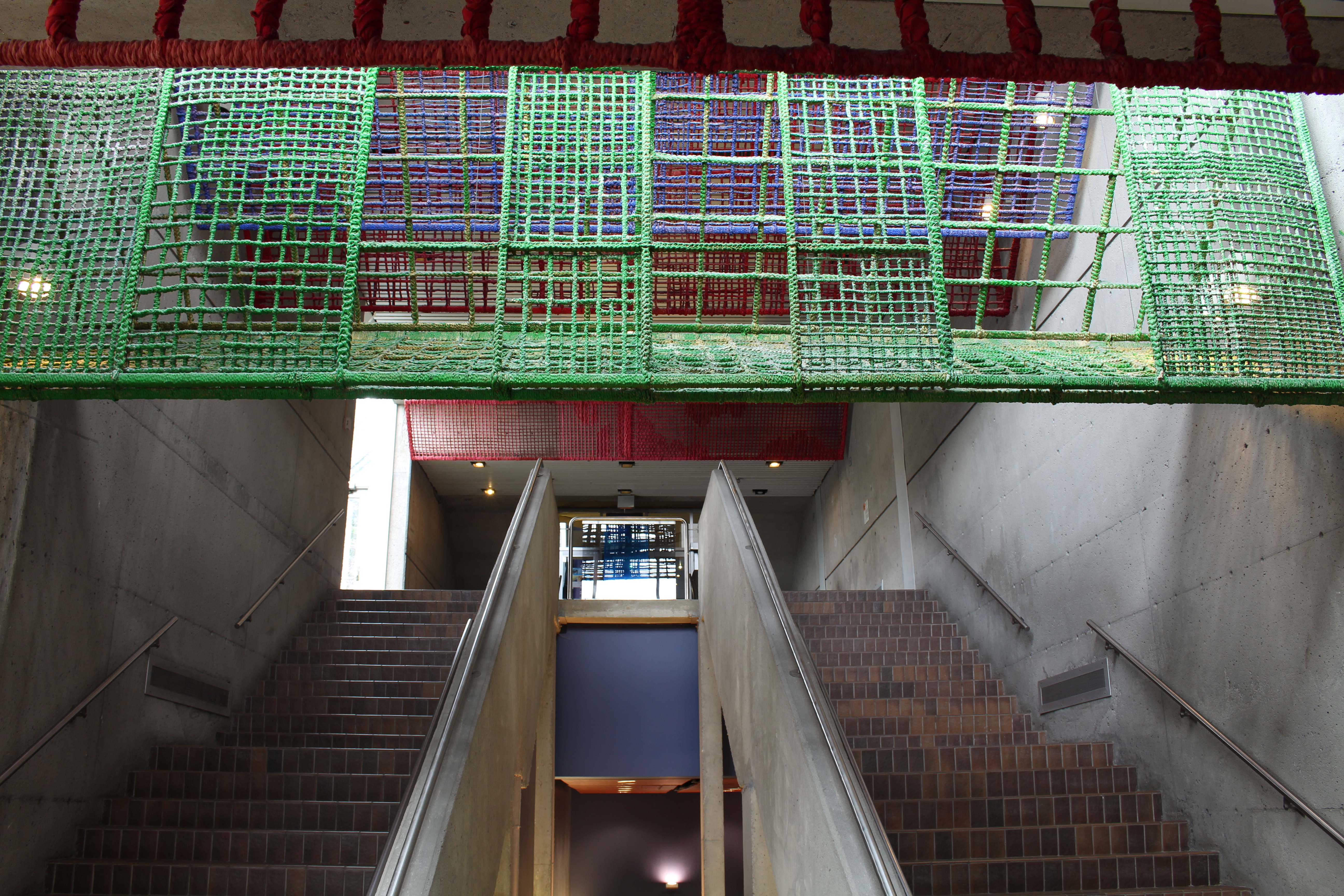

Carole Simard-Laflamme was born in Baie-Saint-Paul (Quebec) in 1945. After studying arts and architecture, she pursued museology at the Université de Montréal. She finalized her training by traveling to all the continents. She received several bursaries, travelling Europe, Africa and the Middle East in order to discover other peoples’ traditions. Her travels and her studies on the various traditional weaving techniques allowed her to measure the powerful links between the human being and his or her environment.
Throughout her career, she also participated in the Biennales de la Tapisserie contemporaine de Montréal and presented more than 50 solo exhibits across Quebec, Canada and Europe. She followed her wish to break down the walls between different artistic disciplines by associating her textiles with architectural and sonorous elements. She created more than 26 monumental pieces that were integrated to architecture as she dearly wanted to promote the presence of textiles in modern day art. She was invited to direct the Musée d’art conteporain de Baie-Saint-Paul from 2006 to 2007.
Her creations are always laced with the theme of human habitat. During her architectural studies, she developed an interest for the relationship between Man and his or her habitat. She created Habit-Habitat-Habitus, a piece that earned her a spot in the 1989 International Textile Competition in Japan.
She explores many different disciplines when creating her pieces or when collaboration with others. For example, she united fibers and music after her research and studies in musicology at the Université de Montréal numerous times when collaborating with composer François Tousignant. She integrated elements of photography and danse to her creations.

Artwork description
This colossal colored web above the staircase is composed of 21 panels suspended at different heights. These panels are regrouped to form nine modules that appear as differently-shaped cages: triangular-based prisms and three-dimensional parallelograms. Each grating-shaped panel allows natural light to penetrate the building from the windows above the stairs.
The pieces makes the concrete walls shine with projected bright colors. The metal webs are entirely covered with fibers weaved following double-woven chaining – a traditional technique from Quebec.
In the spring of 1979, the Université de Montréal held a contest to choose two pieces of art to decorate the CEPSUM. These two pieces were supposed to be a sculpture situated near the CEPSUM, a mural decorating the inside 200 feet-long concrete wall inside the CEPSUM’s main entrance. This project won the contest. To complete it, the artist hired eight people. A biologist, an educator, a nurse and others, all unemployed at the time, worked on it for 10 months. The artist wished that the piece would be a symbol for the bonds that unite human beings throughout their lives.
The tapestry, in its current practice, is no longer considered as purely decorative art, but as an artistic expression in the same way as painting and sculpture. Nowadays, it became detached of the walls, where the tradition had confined it, to explore the space around. Carole Simard-Laflamme belonged to a group of Quebec artist that forever transformed textile art in Quebec, alongside Micheline Beauchemin and Lucienne Cornet.



